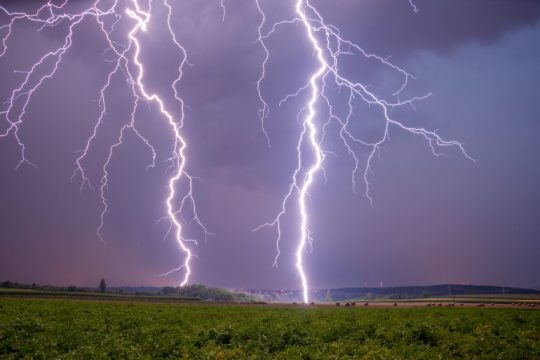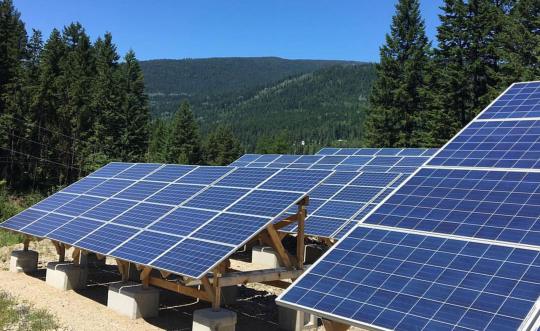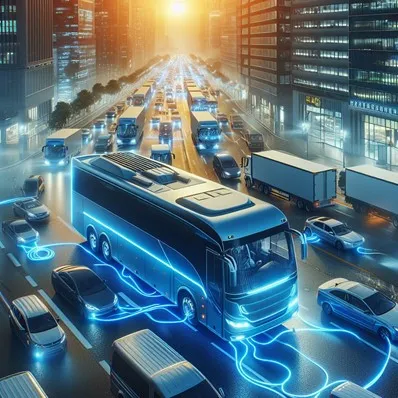#installationelectrique
Explore tagged Tumblr posts
Text
Ensuring Peace of Mind: The Importance of Expert Inspection Before Installing a Security System

In an increasingly uncertain world, safeguarding your home or business against potential threats is paramount. While installing a security system is a proactive step towards enhancing safety and security, ensuring its effectiveness requires more than just purchasing and setting up equipment. Expert inspection before installation is crucial to identify vulnerabilities, tailor the system to specific needs, and maximize its protective capabilities. Let's delve into why expert inspection is essential for ensuring peace of mind and safeguarding your property.
Identifying Vulnerabilities
Expert inspectors possess the knowledge and expertise to assess your property thoroughly, identifying vulnerabilities and potential security risks that may go unnoticed to the untrained eye. From assessing entry points and perimeter security to evaluating existing security measures, expert inspection provides valuable insights into areas that require attention and reinforcement.
Customization to Specific Needs
Every home or business has unique security requirements based on factors such as location, layout, and potential threats. An expert inspection allows security professionals to tailor the security system to meet specific needs and address identified vulnerabilities effectively. Whether it's installing surveillance cameras in strategic locations, implementing access control measures, or integrating smart sensors and alarms, customization ensures that the security system aligns with your property's distinct requirements.
Maximizing Protective Capabilities
A security system is only as effective as its design and implementation. Expert inspection ensures that your security system is configured optimally to maximize its protective capabilities. From selecting the right equipment and technology to optimizing placement and coverage, expert inspectors leverage their expertise to design a comprehensive security solution that deters intruders, detects threats, and alerts authorities promptly in case of emergencies.
Compliance with Regulations and Standards
Depending on your location and industry, there may be specific regulations and standards governing security system installation and operation. Expert inspectors stay abreast of regulatory requirements and industry standards, ensuring that your security system complies with relevant guidelines. By adhering to regulations and standards, you not only enhance security but also avoid potential legal liabilities and penalties.
Cost-Effectiveness in the Long Run
While investing in expert inspection before installing a security system may incur initial costs, it offers significant long-term benefits in terms of cost-effectiveness. By identifying vulnerabilities and customizing the security system to address specific needs, expert inspection helps prevent costly security breaches, property damage, and loss of assets. Moreover, a well-designed and optimized security system can lower insurance premiums, saving you money over time.

We can say that expert inspection before installing a security system is a critical step towards achieving comprehensive security and peace of mind. By identifying vulnerabilities, customizing the system to specific needs, maximizing protective capabilities, ensuring compliance with regulations, and promoting cost-effectiveness, expert inspection sets the foundation for a robust and effective security infrastructure. Prioritizing expert inspection demonstrates your commitment to safeguarding what matters most and reinforces your readiness to address emerging security challenges proactively.
#electrician montreal#maitre electricien montreal#montreal#electrical contractor montreal#installationelectrique#entrepreneur electricien montreal#montreal electricity services#electrician in montreal#installing electricity services Montreal
0 notes
Text
8 Faits sur l'Électricité que Vous ne connaissiez probablement pas
L'électricité est une force mystérieuse qui alimente notre monde moderne. Bien que nous l'utilisions quotidiennement, il y a encore beaucoup de choses que nous ne savons pas sur cette merveille de la science.
Découvrez avec nous aujourd'hui huit faits fascinants sur l'électricité que vous ignorez peut-être.
1. L'Électricité Statique n'est pas un Mythe

L'électricité statique est réelle et peut être observée dans notre vie quotidienne, comme lorsque nos cheveux se dressent sur la tête par temps sec. Elle se produit lorsque des charges électriques s'accumulent sur des surfaces non conductrices et créent une décharge électrique lorsqu'elles sont déchargées.
2. Les Éclairs sont Plus Chauds que la Surface du Soleil

Les éclairs peuvent atteindre des températures incroyablement élevées, jusqu'à 30 000°C, ce qui est plus chaud que la surface du Soleil. Cette chaleur intense est capable de transformer l'air en plasma et de provoquer des dégâts considérables.
3. Les Électriciens Utilisent des Poissons pour Tirer les Câbles

Les "poissons" sont des outils utilisés par les électriciens pour tirer des câbles à travers les conduits. Ces outils flexibles permettent aux électriciens d'atteindre des espaces difficiles d'accès et de réaliser des installations électriques complexes.
4. Les Éoliennes Peuvent Générer de l'Électricité à Partir de Vents Légers

Contrairement à la croyance populaire, les éoliennes peuvent générer de l'électricité même avec des vents légers. Grâce à la technologie moderne, les éoliennes sont de plus en plus efficaces pour convertir l'énergie éolienne en électricité.
5. L'Électricité Peut Voyager à la Vitesse de la Lumière

Dans les circuits électriques, les électrons peuvent se déplacer à des vitesses incroyables, atteignant jusqu'à 300 000 kilomètres par seconde, soit la vitesse de la lumière dans le vide.
6. Les Éclairs Peuvent Voyager à Plusieurs Kilomètres

Un éclair peut parcourir une distance impressionnante, atteignant parfois plusieurs kilomètres de longueur. Cette distance peut être difficile à estimer en raison de la nature imprévisible des éclairs.
7. Les Piles au Lait sont Possibles
Il est possible de créer une petite pile électrique à partir de citrons, de pommes de terre ou même de lait. Ces expériences simples démontrent les principes fondamentaux de la production d'électricité à partir de réactions chimiques.
8. Nikola Tesla a Imaginé un Monde sans Fils

Le célèbre inventeur Nikola Tesla avait une vision futuriste de l'électricité sans fil. Bien que ses idées n'aient pas été pleinement réalisées de son vivant, elles ont jeté les bases des technologies sans fil que nous utilisons aujourd'hui.
L'électricité est une force fascinante qui continue de nous étonner et de nous servir dans notre vie quotidienne. En comprenant mieux ces faits surprenants sur l'électricité, nous pouvons apprécier davantage l'importance et la complexité de cette merveille de la science qui alimente notre monde moderne.
#maitre electricien à montreal#installation électrique à montreal#electrical contractor montreal#electrician#electrician montreal#entrepreneur electricien montreal#installationelectrique
0 notes
Text

Les Entreprises Electriques EB partage avec vous Les 5 Étapes Cruciales de l'Installation de la Fibre Optique

L'installation de la fibre optique est devenue la norme pour fournir des connexions Internet rapides et fiables dans les foyers et les entreprises du monde entier. Contrairement aux câbles en cuivre traditionnels, la fibre optique utilise des fils de verre ou de plastique pour transmettre des données à des vitesses beaucoup plus élevées sur de plus longues distances. Cependant, l'installation de la fibre optique nécessite un processus précis et méticuleux.
Voici les cinq étapes de l'installation de la fibre optique :
1. Planification et Préparation :
Avant de commencer l'installation proprement dite, il est essentiel de planifier soigneusement le projet. Cela comprend l'évaluation du site, la détermination de l'itinéraire des câbles, l'identification des obstacles potentiels tels que les conduits souterrains ou les obstacles aériens, et la sélection des équipements et des matériaux appropriés.
2. Préparation du Tracé du Câble :
La prochaine étape consiste à préparer le tracé du câble. Cela peut inclure le dégagement de la voie pour le passage des câbles, que ce soit sous terre, le long des murs ou à travers des conduits existants. Il est important de s'assurer que le tracé est exempt d'obstacles et qu'il offre une protection adéquate aux câbles.
3. Installation des Câbles :
Une fois que le tracé est prêt, il est temps d'installer les câbles optiques. Cela peut impliquer l'utilisation de différentes techniques en fonction de l'environnement, telles que le soufflage de câble pour les installations souterraines ou l'utilisation de poteaux pour les installations aériennes. Les techniciens doivent être formés pour manipuler les câbles optiques avec soin, car ils sont sensibles à la tension et aux courbures excessives.
4. Connexion et Épissure des Fibres :
Une fois que les câbles sont en place, les fibres optiques doivent être connectées les unes aux autres à l'aide d'épissures. Cette étape nécessite une précision extrême pour assurer une connexion sans perte de signal. Les techniciens utilisent des équipements spéciaux tels que des soudeuses de fibres optiques pour réaliser ces connexions avec précision.
5. Test et Vérification :
Une fois les connexions établies, les câbles doivent être testés pour garantir qu'ils fonctionnent correctement et qu'ils fournissent des performances optimales. Cela peut inclure des tests de continuité, des tests de perte optique et des tests de réflectance pour vérifier l'intégrité du réseau optique. Les techniciens utilisent des équipements de test spécialisés pour effectuer ces vérifications et s'assurer que le réseau répond aux normes de performance requises.
L'installation de la fibre optique est un processus complexe qui nécessite une planification minutieuse, une exécution précise et des tests rigoureux. Les fournisseurs de services Internet et les installateurs peuvent garantir que les réseaux fibre optique sont déployés de manière efficace et fiable, offrant ainsi des connexions Internet ultrarapides et une connectivité robuste pour les années à venir.
#electrician montreal#entrepreneur electricien montreal#installation electrique montreal#installationelectrique#electrical contractor montreal#montreal#électricien montreal#electrical contractor
0 notes
Text
Adapting to the Automotive Charging Landscape: The Evolution of Electrical Services

As the automotive industry undergoes a monumental shift towards electric vehicles (EVs), the demand for charging infrastructure is skyrocketing. This transition not only impacts vehicle manufacturers but also presents significant opportunities and challenges for electrical services providers. In this article, we'll explore how electrical services are adapting to the evolving automotive charging landscape and the key factors driving this transformation.
Expansion of Charging Infrastructure: One of the most noticeable changes in the automotive industry is the proliferation of EV charging stations. Electrical services companies are playing a vital role in this expansion by installing, maintaining, and upgrading charging infrastructure. Whether it's installing fast chargers along highways, setting up charging stations in urban areas, or equipping residential properties with home charging solutions, electrical services providers are at the forefront of facilitating convenient and accessible charging options for EV owners.
Technological Advancements: The rapid advancement of technology is revolutionizing the automotive charging landscape, and electrical services companies are keeping pace with these innovations. From smart charging solutions and wireless charging technologies to bi-directional charging capabilities and energy storage integration, electrical services providers are leveraging cutting-edge technologies to enhance the efficiency, reliability, and convenience of EV charging systems. These advancements not only improve the user experience but also contribute to the overall sustainability and resilience of the electrical grid.
Integration with Renewable Energy: Another significant trend in the automotive charging landscape is the integration of renewable energy sources such as solar and wind power. Electrical services companies are increasingly involved in designing and implementing charging solutions that utilize clean and sustainable energy sources. By integrating renewable energy generation with EV charging infrastructure, these systems reduce carbon emissions, lower operating costs, and promote energy independence. This synergy between electric vehicles and renewable energy represents a transformative shift towards a greener and more sustainable transportation ecosystem.
Customized Solutions for Different Sectors: Electrical services providers are catering to the diverse needs of various sectors within the automotive charging landscape. For example, they're designing tailored solutions for commercial fleets, public transportation networks, corporate campuses, and residential developments. These customized solutions consider factors such as charging capacity, location logistics, power distribution requirements, and user behavior patterns. By offering bespoke services to different sectors, electrical services companies are maximizing the efficiency and effectiveness of EV charging infrastructure deployment.
The rise of electric vehicles is transforming the automotive industry, and electrical services companies are at the forefront of this evolution. By expanding charging infrastructure, embracing technological advancements, integrating renewable energy, offering customized solutions, and navigating regulatory frameworks, electrical services providers are playing a pivotal role in facilitating the widespread adoption of electric vehicles. As the automotive charging landscape continues to evolve, electrical services will remain indispensable in powering the future of transportation.
#electrician montreal#entrepreneurelectricienmontreal#installationelectriquemontreal#electrician#montreal#installationelectrique#electrical contractor montreal#ev charging#ev car brands
0 notes
Text
Les Dernières Tendances dans la Recharge des Véhicules Électriques

Avec l'essor continu des véhicules électriques (VE) dans le monde entier, l'industrie de la recharge des VE évolue rapidement pour répondre aux besoins croissants des propriétaires de VE. Des progrès technologiques aux modèles d'affaires novateurs, les dernières tendances dans ce domaine façonnent l'avenir de la mobilité électrique. Dans cet article, nous explorons les tendances les plus récentes dans la recharge des véhicules électriques et leur impact sur l'adoption généralisée de cette technologie.
1. Chargement Ultra-Rapide :
L'une des tendances les plus marquantes dans la recharge des VE est l'avènement des stations de recharge ultra-rapides. Ces stations, équipées de technologies de charge rapide telles que la charge à haute puissance (HPC) et la charge rapide en courant continu (CC), permettent aux conducteurs de recharger leur véhicule en quelques minutes seulement, offrant ainsi une expérience de recharge rapide et pratique qui se rapproche de celle du plein d'essence traditionnel.
2. Réseau de Recharge Étendu :
Les constructeurs automobiles, les fournisseurs de services énergétiques et les exploitants de réseaux de recharge investissent massivement dans le déploiement d'un réseau de recharge étendu pour offrir une couverture complète et pratique aux conducteurs de VE. De nombreux pays mettent en place des initiatives visant à augmenter le nombre de bornes de recharge accessibles au public, que ce soit sur les autoroutes, dans les zones urbaines ou dans les zones rurales, pour encourager l'adoption des VE et éliminer les barrières liées à l'autonomie.
3. Intégration avec les Énergies Renouvelables :
Une autre tendance majeure est l'intégration des stations de recharge avec les énergies renouvelables, telles que l'énergie solaire et éolienne. Les stations de recharge alimentées par des sources d'énergie renouvelable contribuent à réduire l'empreinte carbone de la mobilité électrique en utilisant des énergies propres et durables pour alimenter les VE. De plus, elles offrent une solution de recharge plus résiliente et autonome, notamment en cas de pannes de courant ou de catastrophes naturelles.
4. Infrastructure de Recharge Intelligente :
L'essor de l'Internet des objets (IoT) et des technologies de communication avancées permet l'émergence d'une infrastructure de recharge intelligente. Les bornes de recharge connectées peuvent communiquer avec les véhicules, les réseaux électriques et les fournisseurs de services pour optimiser la charge en fonction de la demande, réduire les coûts d'électricité et améliorer l'efficacité du réseau électrique dans son ensemble.
5. Charge à Domicile et sur Lieu de Travail :
Enfin, la tendance à la recharge à domicile et sur le lieu de travail prend de l'ampleur, offrant aux propriétaires de VE la commodité de recharger leur véhicule pendant qu'ils dorment ou travaillent. De nombreuses entreprises et propriétaires de logements installent des bornes de recharge privées pour encourager l'adoption des VE par leurs employés ou résidents, créant ainsi un écosystème favorable à la mobilité électrique.
En conclusion, les dernières tendances dans la recharge des véhicules électriques reflètent l'engagement continu envers une mobilité plus propre, plus pratique et plus durable. Avec l'expansion rapide de l'infrastructure de recharge, l'intégration des énergies renouvelables et l'adoption de technologies intelligentes, l'avenir de la recharge des VE est prometteur, ouvrant la voie à une transition vers une mobilité électrique généralisée et éco-responsable.
#electrician montreal#maitreelectricienmontreal#entrepreneurelectricienmontreal#electrician#installationelectrique#electrical contractor montreal#installationelectriquemontreal
0 notes
Text
The Rise of Community Solar in Canada: A Bright Future for Sustainable Energy

As Canada strives to accelerate its transition to a low-carbon economy and reduce greenhouse gas emissions, the adoption of renewable energy solutions has gained momentum across the country. Among these solutions, community solar projects are emerging as a promising avenue for expanding access to clean energy while fostering local engagement and empowerment. This article explores the rise of community solar in Canada, highlighting its benefits, challenges, and the transformative impact it can have on energy sustainability and community resilience.
The Concept of Community Solar: Community solar, also known as shared solar or solar gardens, enables individuals, businesses, and organizations to collectively invest in and benefit from solar energy generation. Unlike traditional rooftop solar installations that require homeowners or businesses to own and maintain the solar panels on their property, community solar projects allow participants to subscribe to a portion of a larger solar array located off-site. Participants receive credits or discounts on their electricity bills based on their share of the energy produced by the solar system.
Benefits of Community Solar: Community solar offers a range of benefits for participants, communities, and the environment. For residents and businesses, community solar provides an opportunity to access solar energy without the need for upfront costs or rooftop installations, making solar power more accessible and affordable. By subscribing to a community solar project, participants can lock in stable electricity rates and reduce their reliance on fossil fuels, thereby lowering their carbon footprint and contributing to climate action.
Moreover, community solar projects stimulate local economic development by creating jobs, fostering partnerships with local businesses, and generating revenue for host communities. These projects also promote social equity by ensuring that low-income households and renters have equitable access to the benefits of renewable energy, regardless of their ability to install solar panels on their own properties.
The Canadian Context: In Canada, community solar projects are gaining traction in provinces across the country, driven by supportive policies, declining solar technology costs, and growing public demand for clean energy alternatives. While each province has its own regulatory framework and incentive programs for renewable energy, several provinces have implemented policies that facilitate the development of community solar projects.
For example, in Ontario, the Net Metering and Virtual Net Metering programs allow customers to offset their electricity bills by generating solar power on-site or subscribing to community solar projects. Similarly, Alberta's Community Generation program enables community groups to develop renewable energy projects and sell electricity to the grid at a competitive rate. These policy measures, coupled with grassroots initiatives and community-led partnerships, are fueling the expansion of community solar initiatives across Canada.
Challenges and Opportunities: Despite the growing momentum behind community solar in Canada, several challenges remain, including regulatory barriers, financing constraints, and technical limitations. Regulatory complexities, such as interconnection requirements and utility regulations, can hinder the development of community solar projects and create barriers to entry for community groups and developers. Moreover, securing financing for community solar projects can be challenging, particularly for small-scale initiatives or projects led by community organizations with limited access to capital. However, innovative financing models, such as community bonds, crowdfunding platforms, and public-private partnerships, are emerging to address these challenges and unlock investment opportunities for community solar projects.
In conclusion, the rise of community solar in Canada represents a significant opportunity to accelerate the transition to clean, renewable energy while empowering communities and fostering local resilience. By enabling individuals and organizations to collectively invest in solar energy generation, community solar projects democratize access to clean energy, drive economic development, and promote social equity,as Canada continues to advance its renewable energy goals and address the challenges of climate change, community solar will play an increasingly important role in diversifying the energy mix, reducing greenhouse gas emissions, and building sustainable communities. By harnessing the power of sunlight and community collaboration, Canada can embrace a brighter future powered by clean, renewable energy for all.
#electrician montreal#entrepreneurelectricienmontreal#maitreelectricienmontreal#installationelectriquemontreal#electrician#installationelectrique#electrical contractor montreal#montreal
0 notes
Text
Maximizing Energy Efficiency with Electrical Services

In today's environmentally conscious world, optimizing energy usage is not only beneficial for reducing utility costs but also essential for minimizing carbon footprints and promoting sustainability. Electrical services play a pivotal role in achieving energy efficiency, offering innovative solutions to businesses and homeowners alike. In this article, we'll explore various strategies and electrical services aimed at maximizing energy efficiency and reducing energy consumption.
Energy Audits and Assessments: The first step towards optimizing energy usage is to conduct a comprehensive energy audit or assessment of the existing electrical systems. Qualified electrical technicians can evaluate energy consumption patterns, identify inefficiencies, and pinpoint areas for improvement. Energy audits help businesses and homeowners understand their energy usage profile, prioritize energy-saving measures, and develop tailored strategies for optimizing energy efficiency.
Lighting Upgrades and Retrofits: Lighting accounts for a significant portion of energy consumption in both commercial and residential settings. Upgrading to energy-efficient lighting solutions such as LED (light-emitting diode) bulbs offers a simple yet effective way to reduce energy usage and lower utility bills. Electrical services providers can assist businesses and homeowners in selecting the right lighting products, designing optimal lighting layouts, and implementing retrofit projects to replace outdated fixtures with energy-efficient alternatives.
Smart Lighting and Controls:

Integrating smart lighting systems with advanced controls and automation capabilities enables businesses and homeowners to further optimize energy usage. Smart lighting solutions allow for precise control over lighting levels, schedules, and occupancy sensors, ensuring that lights are only activated when needed. Additionally, smart lighting systems can be remotely monitored and managed via smartphone apps or centralized building management platforms, providing real-time insights into energy consumption and performance.
Energy-Efficient HVAC Systems: Heating, ventilation, and air conditioning (HVAC) systems are major contributors to energy consumption in commercial buildings and residential properties. Upgrading to energy-efficient HVAC equipment, such as high-efficiency heat pumps or variable-speed air handlers, can significantly reduce energy usage while maintaining comfort levels. Electrical services providers can design and install energy-efficient HVAC systems tailored to the specific needs and requirements of businesses and homeowners.
Power Factor Correction: Power factor correction is a technique used to improve the efficiency of electrical systems by optimizing the balance between reactive power and real power. Installing power factor correction devices, such as capacitors, helps businesses and homeowners reduce energy losses, improve voltage stability, and enhance overall system efficiency. Electrical services providers can assess power quality issues, design customized power factor correction solutions, and implement measures to optimize energy usage.
Renewable Energy Integration:

Harnessing renewable energy sources, such as solar photovoltaic (PV) panels or wind turbines, offers a sustainable solution for reducing reliance on traditional grid-based electricity and lowering energy costs. Electrical services providers can assist businesses and homeowners in designing, installing, and integrating renewable energy systems into their electrical infrastructure. By generating clean energy onsite, businesses and homeowners can offset electricity consumption, reduce carbon emissions, and achieve greater energy independence.
In conclusion , maximizing energy efficiency through strategic electrical services not only reduces operating costs but also contributes to environmental sustainability and long-term resource conservation. By conducting energy audits, upgrading lighting systems, implementing smart controls, optimizing HVAC systems, correcting power factors, and integrating renewable energy sources, businesses and homeowners can achieve significant energy savings and enhance overall energy performance. Partnering with experienced electrical services providers ensures that energy optimization initiatives are tailored to specific needs, objectives, and budgetary considerations, ultimately paving the way towards a more sustainable and energy-efficient future.
#electrician montreal#entrepreneurelectricienmontreal#maitreelectricienmontreal#installationelectriquemontreal#electrician#electricity#electrical contractor montreal#installationelectrique#montreal
0 notes
Text
The Electrical Panel : Functions and Maintenance

Often referred to as the breaker box or distribution board, serves as the nerve center of a building's electrical system. This crucial component is responsible for receiving power from the utility company and distributing it safely to various circuits throughout the structure. Typically located in a utility room, basement, or garage, the electrical panel contains circuit breakers or fuses that protect the wiring and appliances from electrical overload. Each breaker or fuse corresponds to a specific circuit, such as those for lighting, outlets, or major appliances, allowing for individual control and troubleshooting.
One of the primary functions of the electrical panel is to ensure the safety of the building's occupants and the electrical system itself. Circuit breakers or fuses are designed to trip or blow when they detect an overload or short circuit, effectively cutting off power to the affected circuit to prevent overheating, fires, or other hazards. Modern electrical panels often incorporate advanced features such as ground fault circuit interrupters (GFCIs) and arc fault circuit interrupters (AFCIs) to provide enhanced protection against electrical shocks and fires, especially in areas prone to moisture or where electrical wiring may be compromised.
Proper maintenance and periodic inspection of it , are essential to ensure its continued reliability and safety. Qualified electricians should conduct regular inspections to check for signs of wear, corrosion, or overheating, as well as to verify that the panel is properly grounded and that all connections are secure.
Additionally, homeowners should be proactive in updating their electrical panels to meet current safety standards and accommodate any changes or expansions to their electrical needs. By understanding the importance of the electrical panel and investing in its upkeep, property owners can help ensure the safe and efficient operation of their electrical systems for years to come.
#electrician montreal#entrepreneurelectricienmontreal#maitreelectricienmontreal#installationelectriquemontreal#montreal#electrician#installationelectrique
0 notes
Text
Current Trends in Electricity: Winter 2024 Insigh
As the winter of 2024 unfolds, the electricity landscape continues to evolve, shaped by technological advancements, regulatory changes, and shifting consumer preferences. From renewable energy adoption to smart grid innovations, several trends are influencing the way electricity is generated, distributed, and consumed.
In this article today we take a closer look at the prominent electricity trends emerging this winter : https://leeeb.ca/
-Rapid Growth of Renewable Energy:
The transition towards renewable energy sources such as solar, wind, and hydroelectric power continues to accelerate. Governments and utilities worldwide are increasingly investing in renewable energy infrastructure to reduce carbon emissions and combat climate change. In winter 2024, we see a significant increase in the deployment of solar and wind projects, with innovative financing models making renewable energy more accessible to a broader range of consumers.

-Expansion of Energy Storage Solutions:
Energy storage technologies, including batteries and pumped hydro storage, play a crucial role in supporting the integration of intermittent renewable energy sources into the grid. Winter 2024 witnesses a surge in energy storage deployments, driven by falling costs and improvements in technology. Utilities and grid operators are leveraging energy storage systems to enhance grid stability, manage peak demand, and facilitate the transition to a more resilient and flexible electricity infrastructure.

Advancements in Smart Grid Technology:
Smart grid solutions are revolutionizing the way electricity is managed and delivered, offering enhanced reliability, efficiency, and resilience. Winter 2024 sees continued investments in smart grid infrastructure, including advanced metering systems, distribution automation, and grid-edge intelligence. These technologies enable real-time monitoring and control of electricity networks, empowering utilities to optimize operations, reduce outage durations, and better serve customers' evolving needs.

Electrification of Transportation:
The electrification of transportation, including electric vehicles (EVs) and charging infrastructure, is gaining momentum worldwide. Governments are implementing ambitious targets to phase out internal combustion engine vehicles in favor of electric alternatives, driving demand for EVs and associated charging infrastructure. In winter 2024, we witness significant investments in public charging networks, as well as initiatives to incentivize EV adoption through subsidies, rebates, and regulatory measures.

Integration of Distributed Energy Resources:
Distributed energy resources (DERs), such as rooftop solar panels, home energy storage systems, and demand response technologies, are playing an increasingly prominent role in the electricity landscape. Winter 2024 sees utilities and grid operators embracing DER integration strategies to harness the potential of decentralized energy assets. Virtual power plants (VPPs) and microgrid deployments enable the aggregation and optimization of DERs, contributing to grid stability and enabling greater renewable energy penetration.

Focus on Energy Efficiency and Demand-Side Management: Energy efficiency remains a cornerstone of sustainable energy policy, helping to reduce energy consumption, lower utility bills, and mitigate greenhouse gas emissions. Winter 2024 witnesses renewed efforts to promote energy efficiency initiatives, including building retrofits, appliance standards, and demand-side management programs. Utilities and governments are incentivizing consumers to adopt energy-efficient technologies and practices through financial incentives and education campaigns.
Embrace of Electrified Heating and Cooling Solutions:
Electrified heating and cooling systems, such as heat pumps and electric boilers, are gaining traction as alternatives to traditional fossil fuel-based heating systems. Winter 2024 sees a growing adoption of electrified heating and cooling solutions in residential, commercial, and industrial settings, driven by their energy efficiency, environmental benefits, and compatibility with renewable energy sources.

In conclusion, the winter of 2024 reflects a dynamic electricity landscape characterized by the expansion of renewable energy, advancements in grid technology, electrification of transportation, integration of distributed energy resources, emphasis on energy efficiency, and embrace of electrified heating and cooling solutions. These trends underscore the ongoing transformation of the electricity sector towards a more sustainable, resilient, and decentralized energy future.https://leeeb.ca/
#electrician montreal#entrepreneurelectricienmontreal#maitreelectricienmontreal#electricity#installationelectriquemontreal#montreal#electrician#installationelectrique#electrical contractor montreal
0 notes
Text
Finding the Right Electrician: A Four-Step Guide

When it comes to electrical work in your home or business, hiring the right electrician is essential for ensuring safety, quality workmanship, and peace of mind. With numerous electricians available, choosing the right one can seem daunting.
However, by following these four steps, you can confidently find the perfect electrician for your needs:https://leeeb.ca/
Assess Your Needs:
Before you start your search, it's crucial to assess your electrical needs. Determine the scope of the project, whether it's installing new wiring, repairing electrical fixtures, or conducting a safety inspection.
Consider the urgency of the work. Is it an emergency that requires immediate attention, or can it be scheduled for a later date?
Additionally, identify any specific qualifications or certifications you require from the electrician, such as licenses, insurance, or experience with specific types of electrical work.https://leeeb.ca/
Research and Gather Recommendations:
Begin your search for an electrician by gathering recommendations from trusted sources. Ask friends, family, neighbors, or colleagues for referrals based on their past experiences.
Utilize online resources such as review websites, forums, or social media groups to find reputable electricians in your area. Pay attention to reviews, ratings, and testimonials from previous clients.
Verify the credentials of electricians you're considering, including licenses, certifications, and insurance coverage. A licensed and insured electrician provides assurance of competence and protection against liability.
Interview and Request Quotes:
Once you've compiled a list of potential electricians, schedule consultations or interviews with each one. Use this opportunity to discuss your project requirements, ask questions, and assess their professionalism and communication skills.
Inquire about the electrician's experience, qualifications, and approach to the project. Ask for references or examples of past work similar to yours.
Request detailed quotes or estimates for the project, including the cost of materials, labor, and any additional fees or charges. Compare the quotes from different electricians to ensure transparency and competitiveness.
Evaluate and Make a Decision:
After meeting with each electrician and reviewing their proposals, take the time to evaluate and compare your options.
Consider factors such as experience, reputation, communication, and pricing when making your decision. Choose an electrician who instills confidence and meets your specific requirements.
Don't hesitate to ask follow-up questions or request clarification on any aspects of the proposal before making your final decision.
Once you've selected the right electrician for the job, communicate clearly regarding the project timeline, expectations, and any other relevant details.
By following these four steps, you can effectively navigate the process of finding the right electrician for your electrical needs. Remember to prioritize safety, quality, and professionalism throughout the selection process to ensure a successful outcome for your project.https://leeeb.ca/
#entrepreneurelectricienmontreal#maitreelectricienmontreal#electricity#electrician montreal#installationelectriquemontreal#installationelectrique#montreal
0 notes
Text
La Mise à Niveau Électrique
La mise à niveau électrique est une étape essentielle pour garantir la sécurité, la conformité et l’efficacité de votre installation électrique. Que vous souhaitiez moderniser une vieille installation ou répondre aux nouvelles normes, voici ce qu’il faut savoir :
1. Qu’est-ce que la mise à niveau électrique ?
La mise à niveau électrique consiste à mettre à jour les éléments essentiels de votre installation pour qu’elle réponde aux normes en vigueur. Cela inclut notamment :
-Le tableau électrique : Vérification, remplacement ou ajout de disjoncteurs, de différentiels, etc.
-Les câbles et les prises : Remplacement des câbles vétustes, ajout de prises de terre, etc.
-L’éclairage : Modernisation des luminaires, passage à la LED, etc.
2. Pourquoi est-ce important ?
-Sécurité : Une installation obsolète peut présenter des risques d’incendie, de courts-circuits ou d’électrocution.
-Conformité : La mise à niveau garantit que votre installation respecte les normes en vigueur.
-Efficacité énergétique : Des équipements modernes consomment moins d’énergie.
3. Quand effectuer une mise à niveau ?
-Rénovation : Si vous rénovez votre maison, c’est le moment idéal pour mettre à niveau l’électricité.
-Vente ou achat d’un bien : Avant de vendre ou d’acheter, vérifiez l’état de l’installation.
-Changements dans l’utilisation : Si vos besoins en électricité ont évolué (nouvelles technologies, ajout d’appareils, etc.).
4. À qui faire appel ?
Un électricien qualifié : Il évaluera l’état de votre installation et vous conseillera sur les travaux nécessaires.https://leeeb.ca/

#electrician#electrician montreal#electricity#entrepreneurelectricienmontreal#installation#maitreelectricienmontreal#installationelectriquemontreal#installationelectrique#montreal
0 notes
Text
Les point Essentiels pour La Rénovation Électrique chez vous

La rénovation électrique est un processus obligatoire pour assurer la sécurité et l’efficacité de votre installation électrique , voici quelques points clés à prendre en compte lors d’une rénovation électrique :
1-Compréhension des bases de l’électricité :
-Familiarisez-vous avec les principes fondamentaux tels que le courant électrique, la tension et la résistance.
-Assurez-vous de comprendre les concepts essentiels pour travailler en toute sécurité.
2-Normes et Règlements :
-Respectez les normes et réglementations locales concernant l’électricité.
3-Équipements électriques :
-Chaque pièce doit disposer d’un minimum d’équipement électrique.
-Chaque circuit électrique doit être équipé d’un disjoncteur.
-Chaque départ de circuit électrique doit être pourvu d’une protection différentielle.
-La pose d’au moins une prise de terre est obligatoire.
4-Sécurité en électricité :
-Débranchez toujours l’alimentation avant de travailler sur un circuit électrique pour éviter les chocs électriques.
-Utilisez des outils isolés avec des manches isolants pour protéger contre les chocs électriques et mettez en place une signalisation adéquate pour informer les autres du danger potentiel.

En gardant ces points à l’esprit, vous serez bien préparé pour mener à bien votre projet de rénovation électrique en toute sécurité mais avant tous faire appel à un expert électricien https://leeeb.ca/ .
#electrician#installationelectriquemontreal#entrepreneurelectricienmontreal#electrician montreal#installationelectrique#electricity#maitreelectricienmontreal#montreal#installation#rénovation électrique à Montreal
0 notes
Text
Thomas Edison 💡

Just harnessed the power of electricity in a whole new way his legacy holds 1093 US patents in his name along with patents in other different countries 🔌💡https://leeeb.ca/
#electrician#entrepreneurelectricienmontreal#installationelectriquemontreal#maitreelectricienmontreal#installationelectrique#montreal#electricity#electrician montreal#installation
0 notes
Text
Entretien Panneaux solaires , les conseils essentiels !
Nettoyage des panneaux solaires :
Même si les panneaux sont conçus pour s’auto-nettoyer grâce aux précipitations, ils peuvent accumuler de la saleté au fil du temps , On partage avec vous aujourd'hui les conseils essentiels à suivre si vous considérez l'énergie solaire dans votre local.
Nettoyez-les régulièrement à l’aide d’une brosse souple montée sur un manche télescopique et d’eau à température ambiante.
��vitez de marcher sur les panneaux pour éviter de les casser.
Contrôlez régulièrement chaque composant de votre installation photovoltaïque (onduleur, coffrets, tableaux électriques, etc.). Cette maintenance préventive permet de détecter et de prévenir d’éventuels dysfonctionnements de la centrale solaire.
En suivant ces conseils, vous assurerez le bon fonctionnement de vos panneaux solaires et maximiserez leur rendement ! ☀️🔧https://leeeb.ca/

#electrician montreal#entrepreneurelectricienmontreal#installationelectriquemontreal#maitreelectricienmontreal#installation#installationelectrique#electrician#electricity#montreal#Panneauxsolairesmontreal#Electricianmontreal
0 notes
Text

Nicola Tesla , the genius behind our job 👷🔌
His legacy continue to shape the world of electricity and technology and inspiring all of us 👷⚡ https://leeeb.ca/
#electrician montreal#electrician#electricity#montreal#entrepreneurelectricienmontreal#maitreelectricienmontreal#installationelectrique#installationelectriquemontreal
0 notes
Text
Équipe fiable et certifié
L'expertise en électricité est un facteur essentiel pour garder la sécurité et un travail avec une mauvaise installation électrique peut provoquer de très graves accidents , à Montréal LEEEB est présente depuis 2012 pour intervenir pour l'installation électrique et offre une large gamme des services innovants . https://leeeb.ca/

#electrician montreal#entrepreneurelectricienmontreal#maitreelectricienmontreal#electrician#electricity#installationelectrique#Installationelectriquemontreal
0 notes